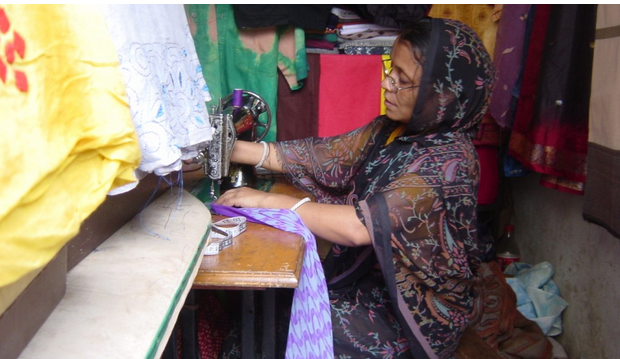Women’s entrepreneurship has hit a media tipping point.
The question is: Is it just a passing media fad that will soon be a blip on the radar screen, or is it actually a real, fundamental economic force that’s reshaping the world?
I think it’s safe to say that it’s the latter. Women-owned entities in the formal sector represent approximately 37 percent of enterprises globally — a market worthy of attention by businesses and policy makers alike.
While aggregated data is often challenging to find, the recent Global Entrepreneurship Monitor(GEM) found 126 million women starting or running businesses, and 98 million operating established (over three and a half years) businesses. That’s 224 million women impacting the global economy — and this survey counts only 67 of the 188 countries recognized by the World Bank.
These entrepreneurs cross the spectrum of micro to high growth — from supporting life to creating wealth. They include hair salon owners, high tech visionaries and everything in between, all making critical economic contributions. Consider three aspects:
Reinvestment: In emerging markets, women reinvest a staggering 90 cents of every additional dollar of income in “human resources” — their families’ education, health, nutrition (compared, by the way, to 30-40% for men. Think of women’s increased income and assets as a gender dividend driving family, community and country wellbeing.
Job creation: Beyond their own incomes, 112 million of the GEM surveyed entrepreneurs employ one or more people. 12 million expect to employ up to six people in the next five years. That’s 72 million jobs just from this small sample. In countries like Kenya, so called “SMEs” (Small and Medium Enterprises) like this are responsible for 80% of all employment. And in the U.S., more than half of the 9.72 million new jobs to be created in the SME sector by 2018 will be created by woman-owned SMEs.
Innovation: When defining innovation as “offering products that are new to some or all customers” in some regions — including the U.S. and developed Europe — women entrepreneurs have higher levels of innovation than their male counterparts.
Collectively, women entrepreneurs look different than their male counterparts. Their lower employment numbers and growth aspirations have historically led to questions of how to “fix” them. But different doesn’t mean deficient — or underperforming. For instance, recent Dow Jones research on venture-backed companies in the U.S. found those that were successful had twice the number of women on the founding team.
On the other end of the growth spectrum, analysis of a dataset from 350 micro finance institutions across 70 countries indicated lending to more women was associated with lower write-offs and lower portfolio-at-risk. Similarly, I recently met with Sanergy and Copia Global, Kenyan social enterprises using franchise models. They both found that women entrepreneurs tend to be more successful because of their trusted status in the community. Controlling for firm characteristics, research suggests that women-owned firms outperform those owned by male counterparts.
Yet, while increasingly a recognized force, women’s entrepreneurship still lags men’s in all but seven countries in the world. If women’s labor participation were closer to male participation, it would contribute $1T to GDP in emerging economies — women led businesses are key to this opportunity.
Perceptions of opportunity and capability strongly link to entrepreneurial activity — that is, if you think you will succeed and will be supported, you are more likely to try. In the US and Developed Europe women are 18% less likely to perceive they have the capability to start a business. While the difference is less for developing economies, in every economy in the GEM study women have lower perceptions of their capabilities, showcasing the enormous opportunity for an enabling environment which would boost entrepreneurial activity rates.
Foundational to this environment are access to healthcare, education, land rights and affordable childcare. Just as critical are role models and mentors. At Bank of America, we have partnerships with Vital Voices and the Cherie Blaire foundation, two leaders in training and mentoring emerging women leaders, to help women achieve their full economic potential. Programs like the Center for Women’s Entrepreneurial Leadership are innovating in the academic space. We’ve all seen first-hand the enormous impact of this essential piece of the ecosystem.
But, as participants in these programs regularly articulate, they are insufficient without access to capital and markets. Women who have benefited from education and mentoring are experiencing “capital punishment.” For this reason, I was thrilled to join the International Finance Corporation (IFC) in Tokyo for the launch of the first global women’s bond, $250M to be invested through banks into women led SMEs. The IFC estimates that enterprises with at least one woman founder are collectively looking for $1T to grow their businesses.
Smart companies are watching this trend. They see that women — including the billion women
Lola applied-looking expected entering the formal economy as employees and entrepreneurs — will dictate their business success. Coca-Cola sees five million women entrepreneurs as part of its global supply chain by 2020. Wal-Mart understands the power of women-led firms to innovate compelling products. Itau perceives the 50% of Brazilian entrepreneurs that are women as a core market, and other members of the Global Banking Alliance for Women think similarly. And all firms should realize that in the war for talent, women are increasingly seeing entrepreneurship as a compelling alternative if a career path appears stunted.
Entrepreneurial activity creates growth and prosperity — and solutions for social problems. And today’s trends show that women will be a driving force of entrepreneurial growth in the future.
This article first appeared on HBR.org. It represents thoughts of the author and does not necessarily represent the position of Bank of America or U.S. Trust.











